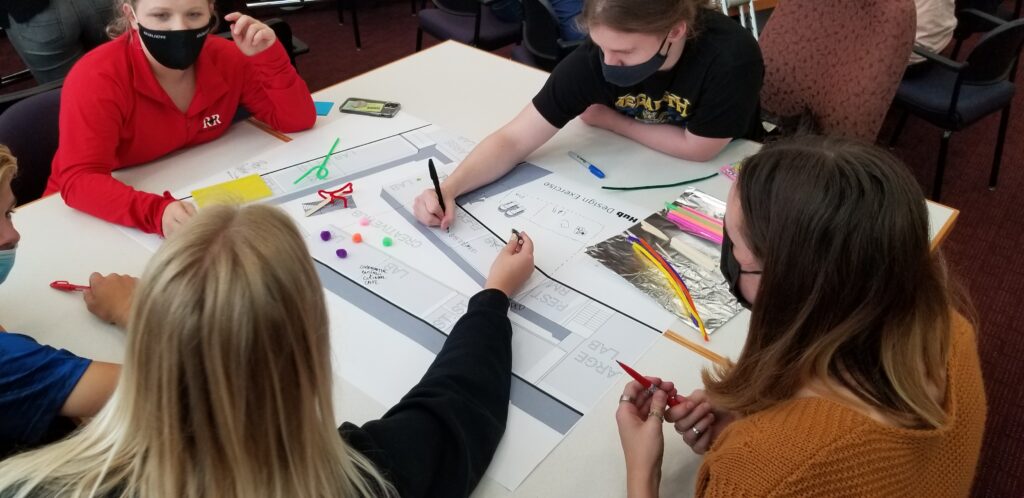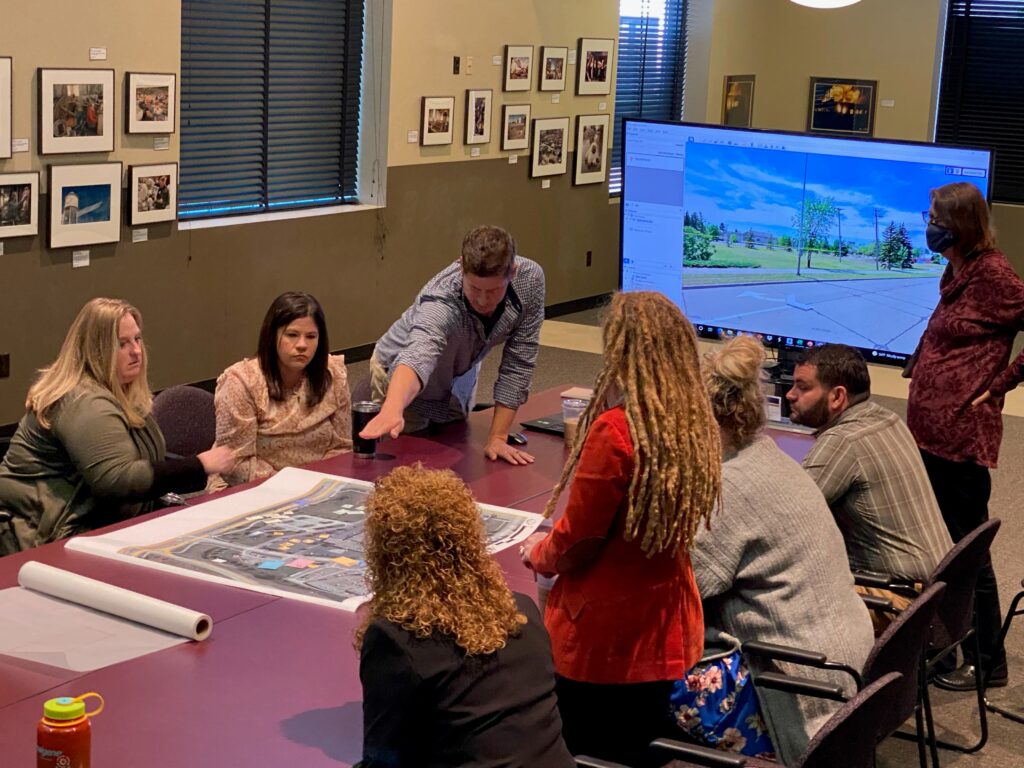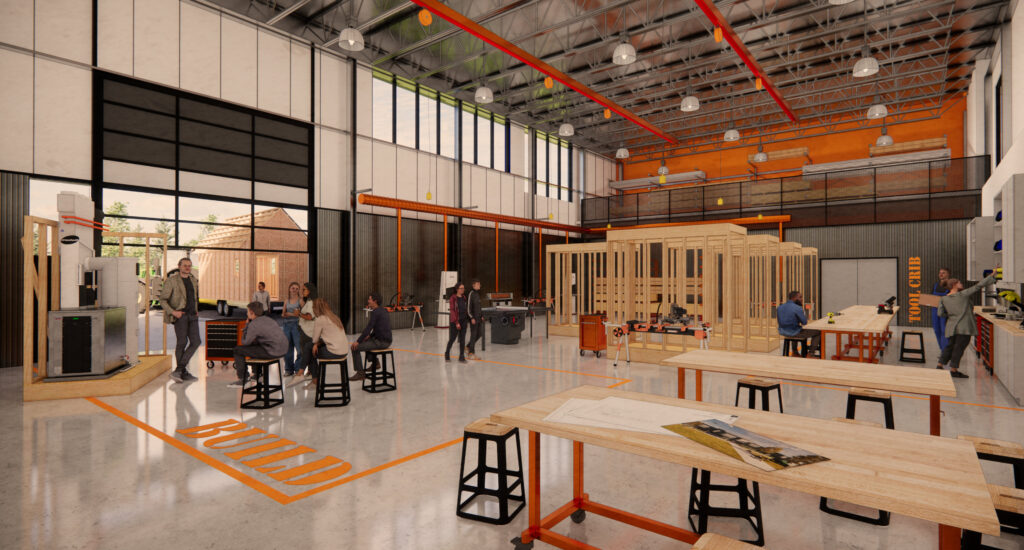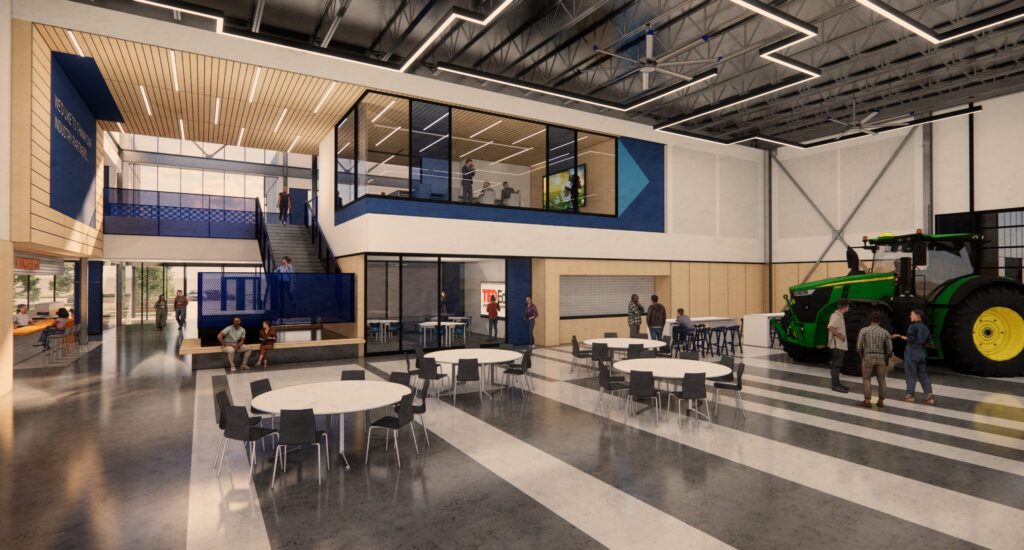In 2023, students from Grand Forks Public Schools were asked the question — “What do you want out of this new facility?” Overwhelmingly, their charge was to create a building that didn’t feel like a traditional school. They wanted a building that supports their interests and creates opportunities to explore in an environment that celebrates learning over home-school identity. When the doors of the new Grand Forks Career Impact Academy open this fall, students will get to see their vision come to life within a destination for real-life, hands-on discovery.
COMMUNITY SUPPORT
The Grand Forks Career Impact Academy (CIA) is the product of the state of North Dakota, the Grand Forks Public School system, and overwhelming support from local businesses and community members coming together to create hands-on education that is transforming the way we live, learn, and ultimately, do business.

In March of 2022, the North Dakota Career and Technical Education Board approved grant funding for 13 projects, allocating millions in funding toward CTE projects throughout the state. The purpose of the grant was to provide students with access to programs that align with regional workforce needs and student interest in hands-on education. The Grand Forks Public School District was one of 13 districts in North Dakota to receive grant funding for their new Career Impact Academy. In 2023, more than $11 million was raised from private donations in 72 days to qualify for a $10 million match from the state.

JLG Architects and BNDRY Studio assisted the Grand Forks Public School District in preparing their grant application and completing preliminary design concepts. Programming for the Career Impact Academy was identified through a needs assessment with participation from the school districts, industry partners, economic development, and higher education institutions — helping align curriculum and programming with post-secondary opportunities as a key step in creating a pipeline to industries.
Involvement from industry partners didn’t stop once the grant was awarded. They were also involved in the design process, sitting in during user group meetings and helping inform the curriculum. For programs that don’t currently exist within their schools, like culinary and precision tech, the district relied on industry partners to shape how those spaces were organized to further support learning.

ALL ARE WELCOME
Elevating an environment that celebrates learning over home-school identity, the Career Impact Academy is a place where all are welcome. The program will not only serve the students of Grand Forks but also high school students of surrounding rural communities. Academic training pathways will be available for students in grades 10, 11 and 12 from nine different school districts. Shared access to the Career Impact Academy provides students with high-quality education and hands-on learning experiences that surrounding rural communities wouldn’t otherwise have access to.
The new facility strengthens the pipeline from secondary to post-secondary, the workforce, or the military. Both high school and adult learner students will be able to earn industry certifications and relevant credentials in their respective fields of study. Instruction will be catered to adults exploring new career fields and skills, as well as current industry employees seeking to enhance skills for career advancement.

The Career Impact Academy focuses on advanced and specialized skill development, whereas introductory skills will be learned at home schools. Programs to be offered include building trades, culinary arts, precision technologies, automotive training, aviation & unmanned aerial systems, robotics, architectural design, engineering, and computer science. Health career programs will provide designated space for occupational and physical therapy, certified nurse assistant, and emergency medical technician training.
Student success and achievement is celebrated through the display of student work and visibility into adjacent programs supporting cross-collaboration between fields within one building.
A commercial kitchen and café support the culinary program through real-life settings where students can practice tangible kitchen skills and soft interaction skills — both identified as critical skills by industry partners. The café has become a valuable opportunity for students to work on everything from knife skills to food preparation, customer service, and fulfilling orders.
Student success and achievement is celebrated through the display of student work and visibility into adjacent programs supporting cross-collaboration between fields within one building. This type of collaboration and real-world training is a critical part of creating experiences that simulate real-world business transactions for students. Increased visibility gauges students’ interest early on, encourages teamwork, and gives new talent valuable experience that would cost most companies thousands to implement on their own.
SUPPORTING THE VISION
Keeping with the non-traditional feel that students desired, this building is not organized with traditional compartmentalization of K12 buildings. Spaces at the Career Impact Academy encourage industry and community partner engagement and demand a more publicly engaged building. The building is organized around three axes connected by the “Hub.” This central space welcomes students, community, and business partners into the center of the building and provides space to highlight each of the programs. The two wings support specific programming and culminate with larger two-story labs that connect directly to flexible outdoor learning spaces.

The “Hub” is a creative environment that provides space to support soft skill development, such as presentation, small and medium group collaboration, cross-disciplinary projects, and places where student work and achievement can be featured. The space types and relationships were heavily influenced by student and industry partner voices. The desire was to create more open and connected learning environments that expose a variety of program types. In response, the placement of each program was strategically selected to provide opportunities for visibility, cross-discipline collaboration, and new and emerging technologies.
Planning for the expansion of the Career Impact Academy was important to allow for strategic growth without impact to existing programming. This philosophy allows each program to flex, expanding or contracting as industry needs change and student interest increases. This was achieved in part through the integration of flexible lab space and shared program areas, which allow for each program area to adjust for changing enrollment. The flexibility designed into each of the axes supports not only the day-to-day flexibility, but also semester to semester and year to year. Connections between labs and collaborative spaces have direct connection to each other, which extends the learning footprint beyond the classroom. These connections are emphasized by visual transparency, but acoustically separated. Flexible furniture and power from the ceiling in learning spaces also foster future flexibility as the curriculum evolves into the future.
BEYOND SIMULATION
What do students really want out of this new facility? Meaningful opportunities to explore a variety of interests — shopping around, testing abilities, and taking steps toward a fulfilling career path. The CIA goes beyond simulation to build the tangible and soft skills today’s employers desire. Whether a student or an adult exploring new career paths, ultimately, this is a place where people are allowed to change their mind, expand their interests, and steer their life in a whole new direction.

